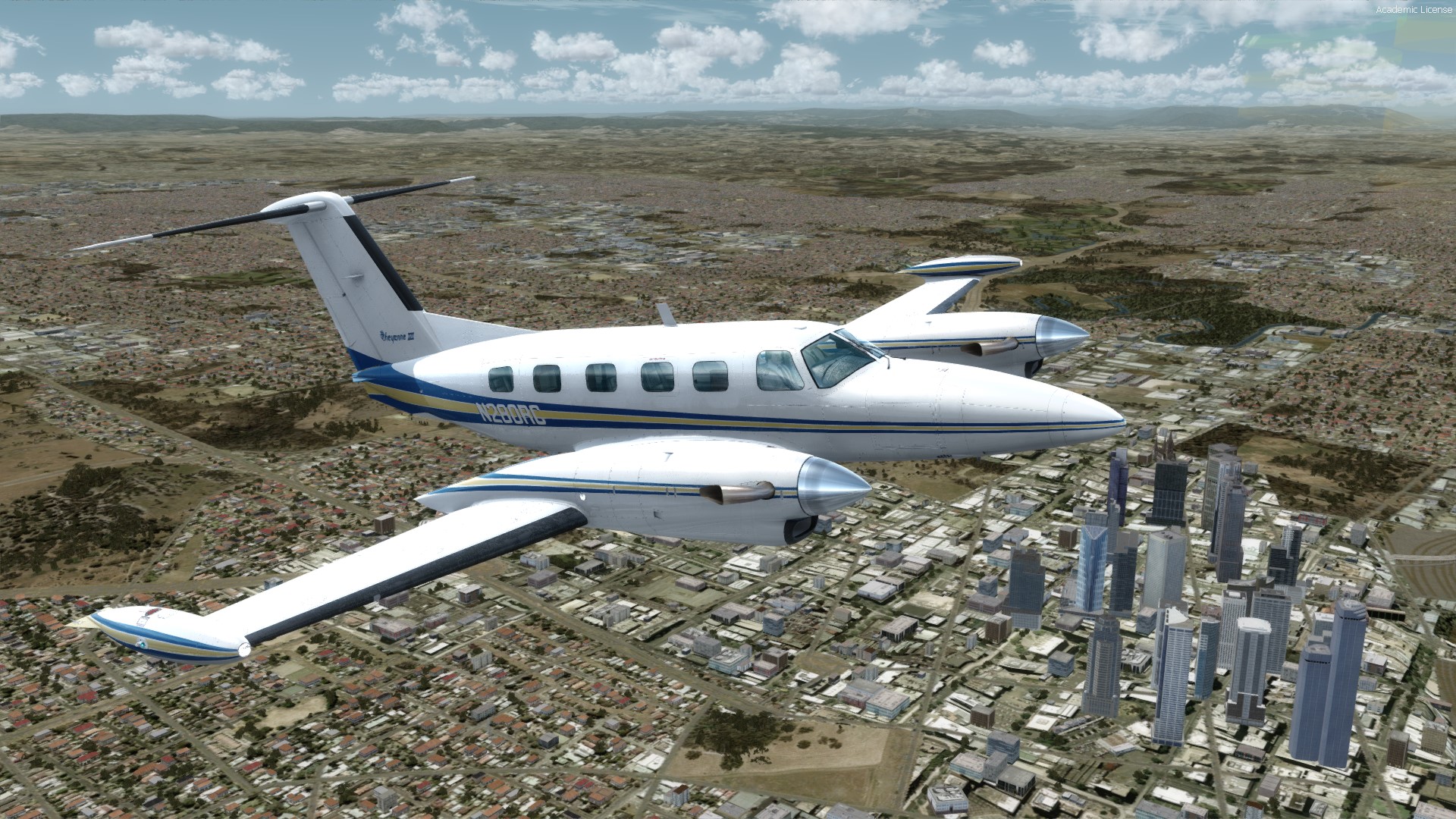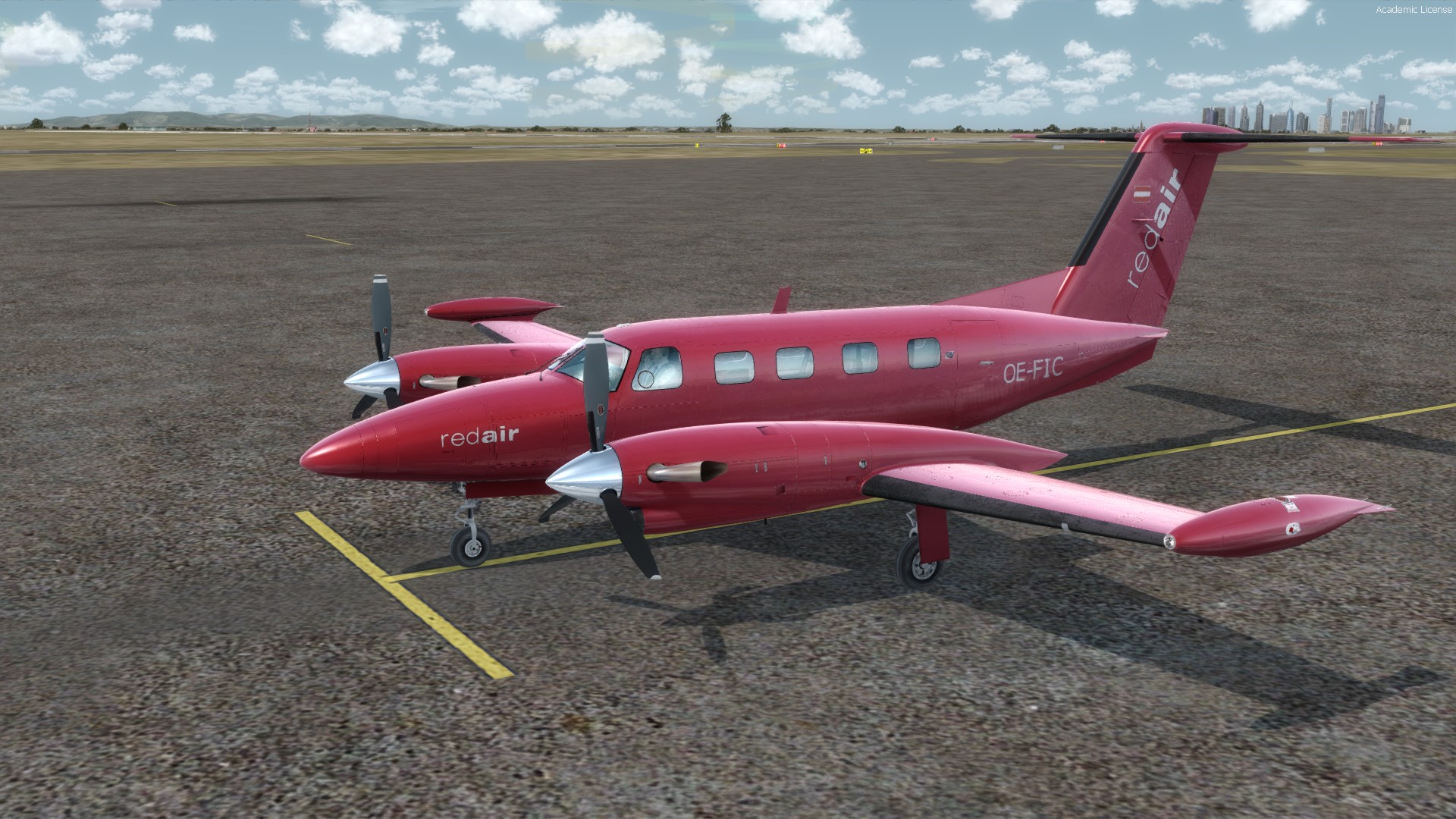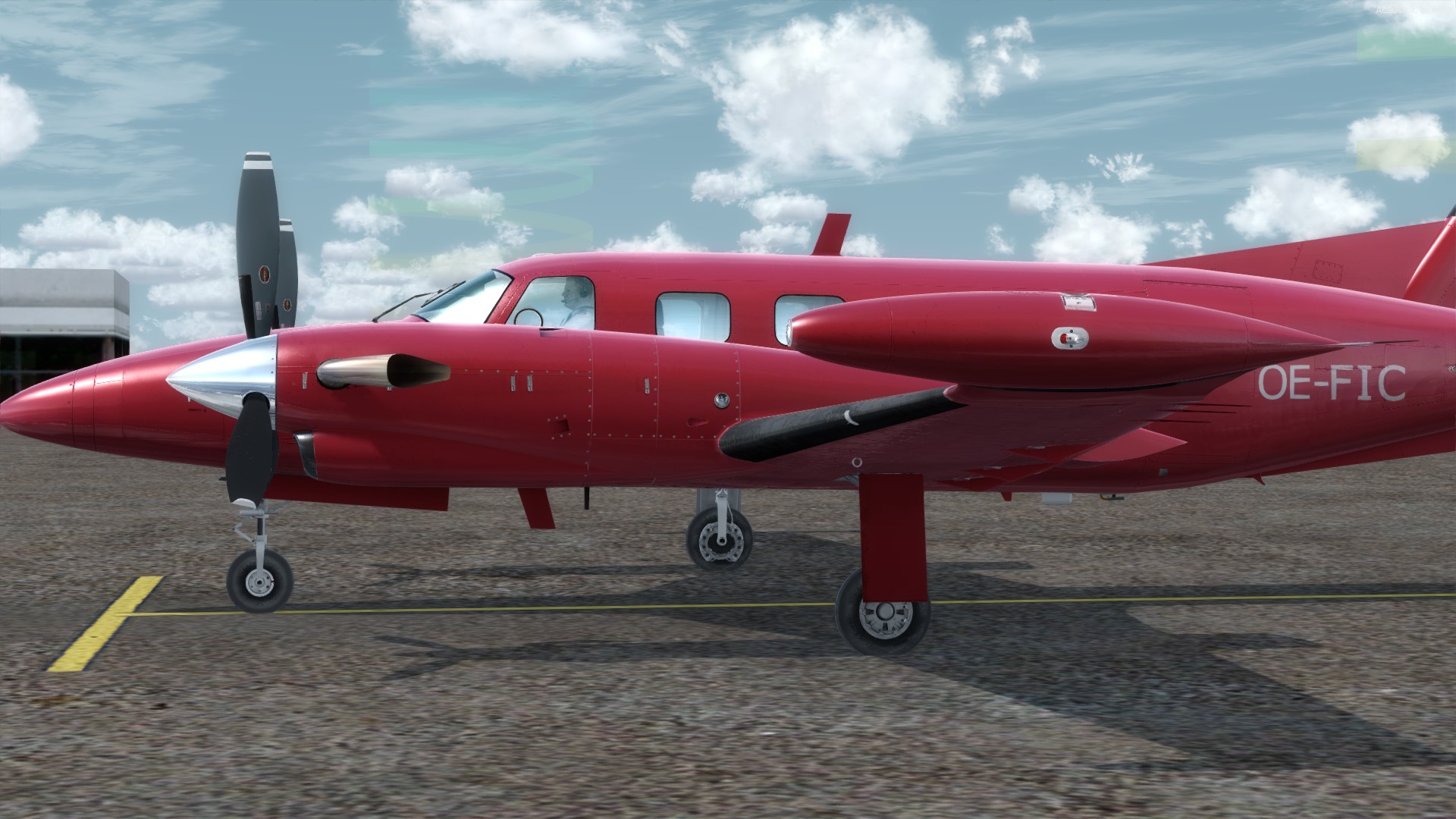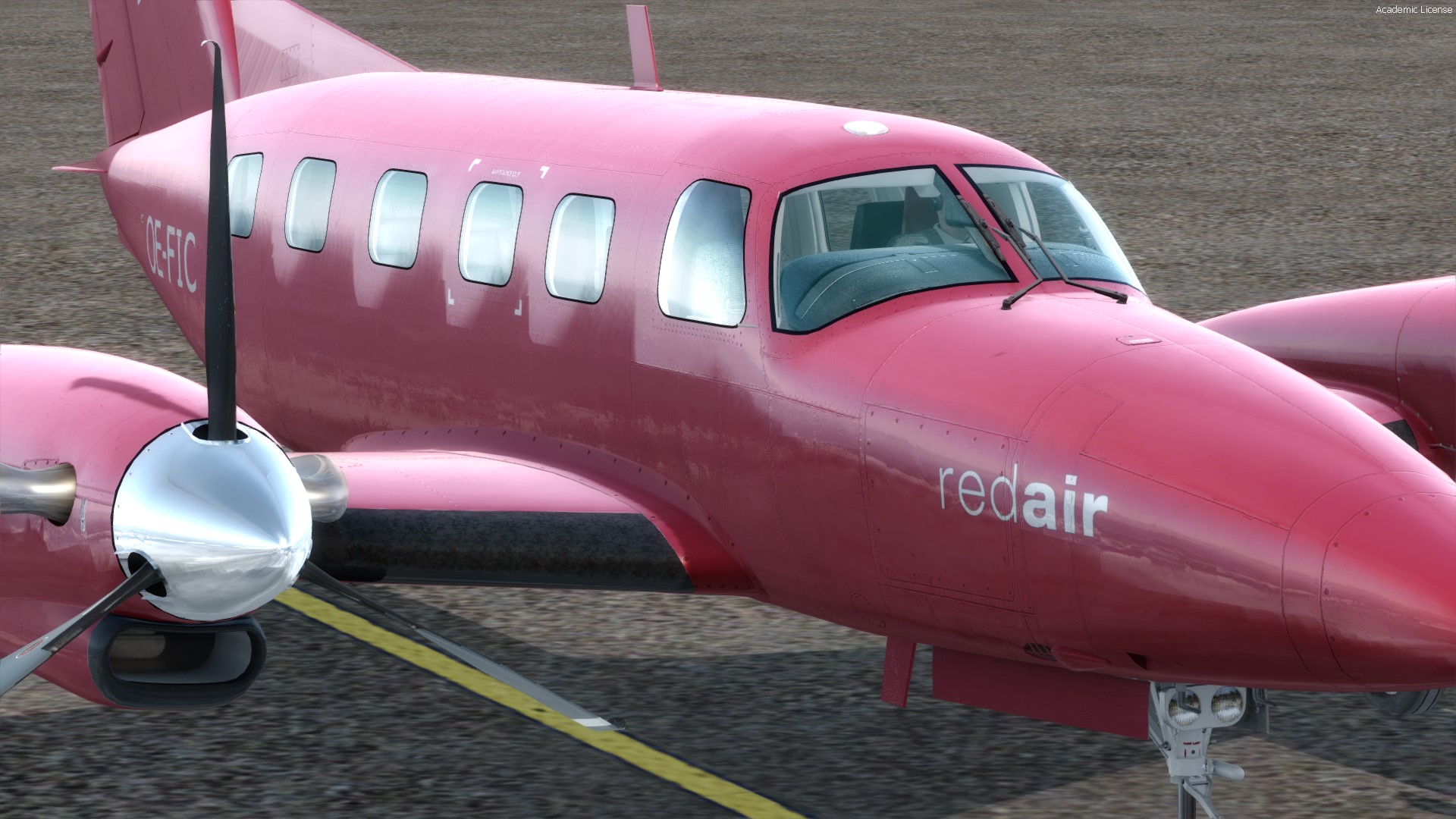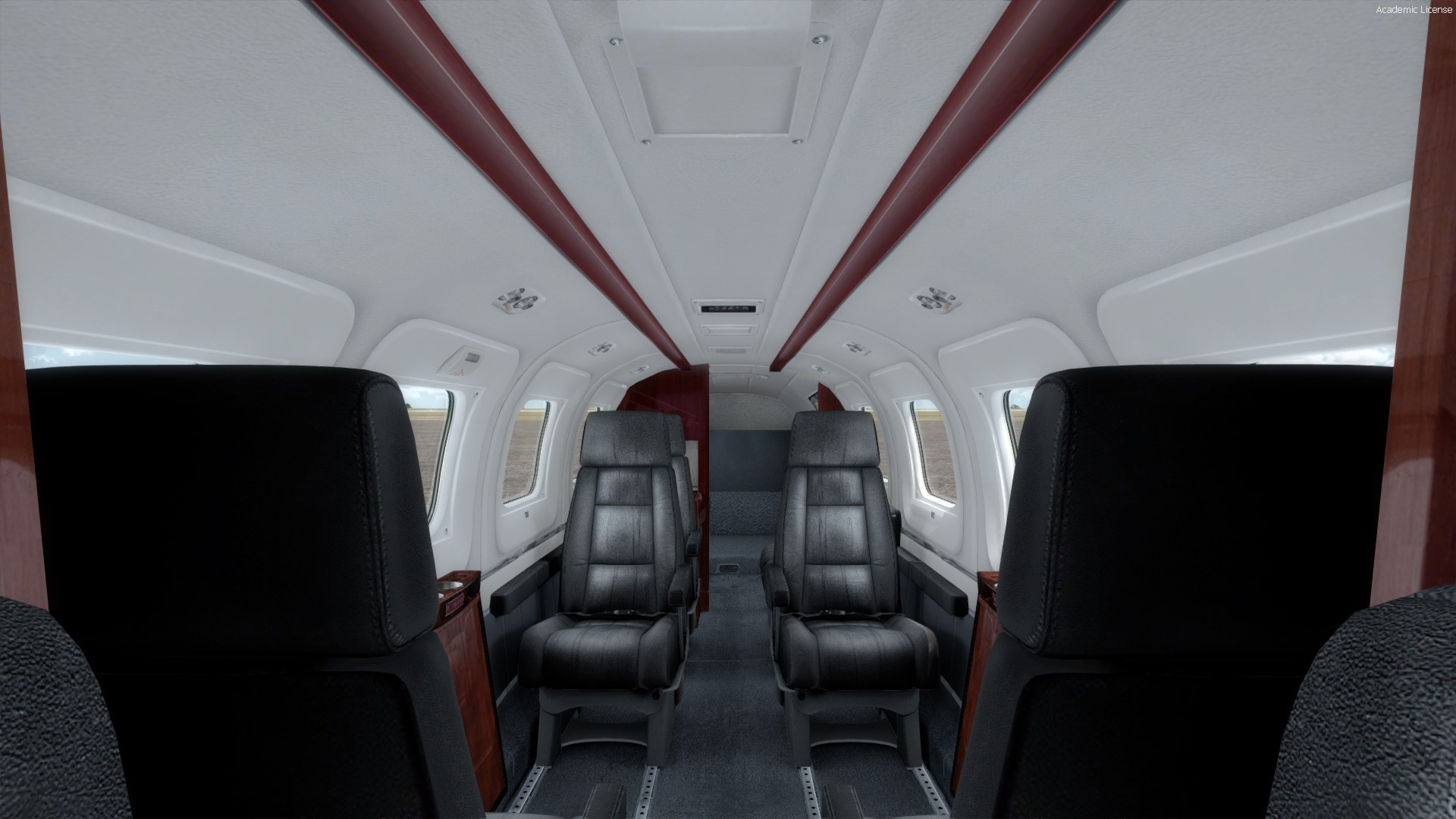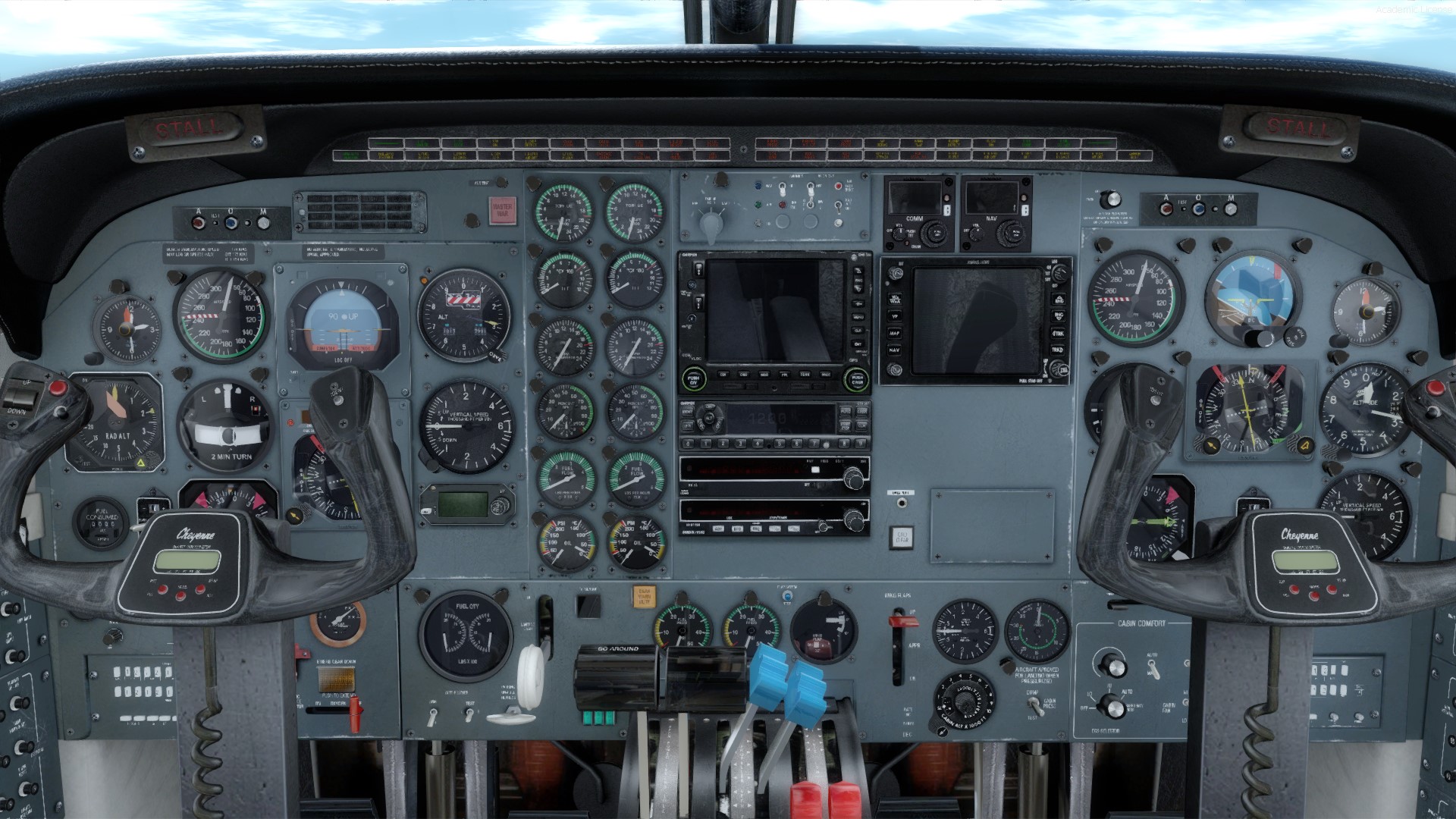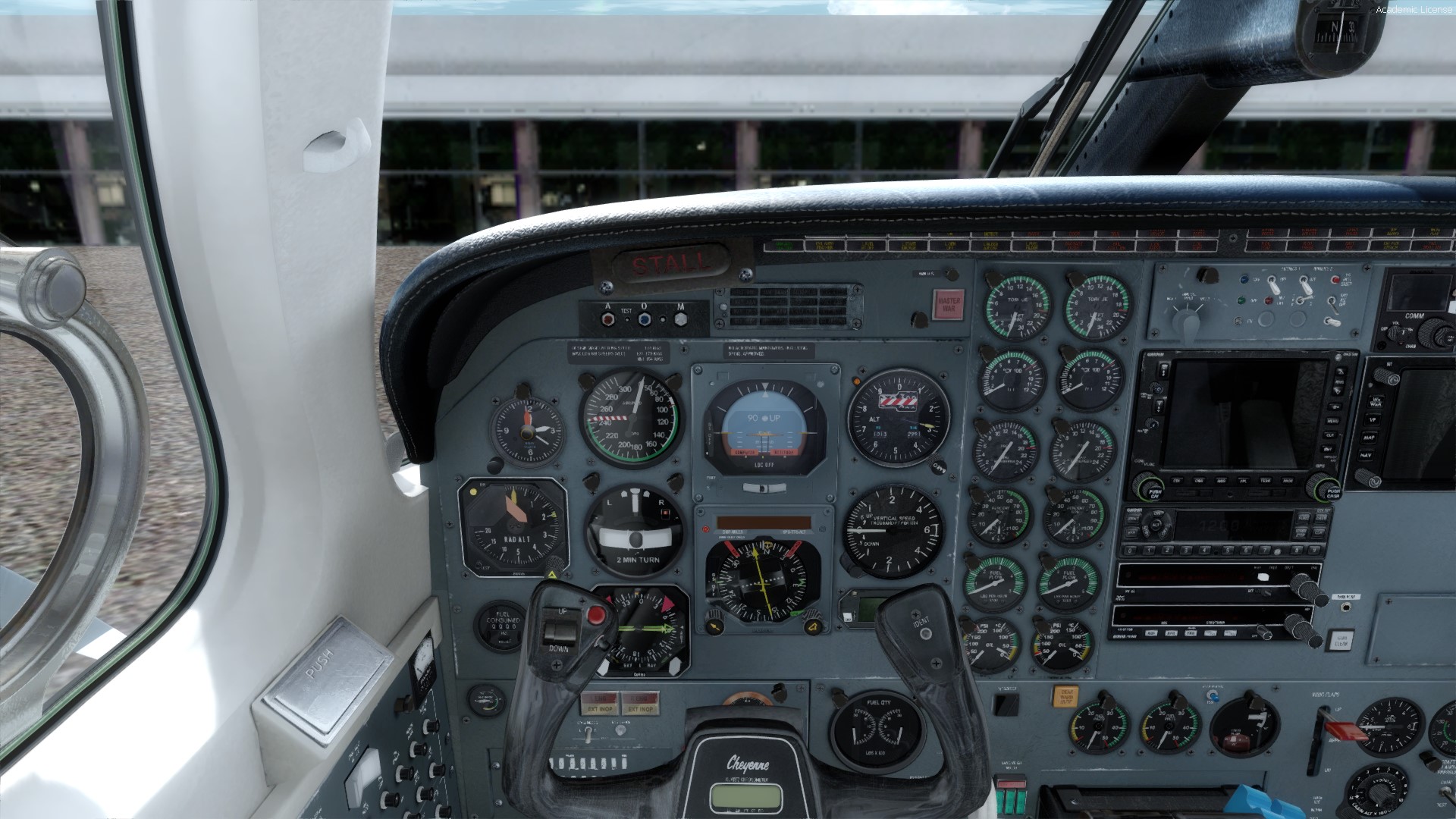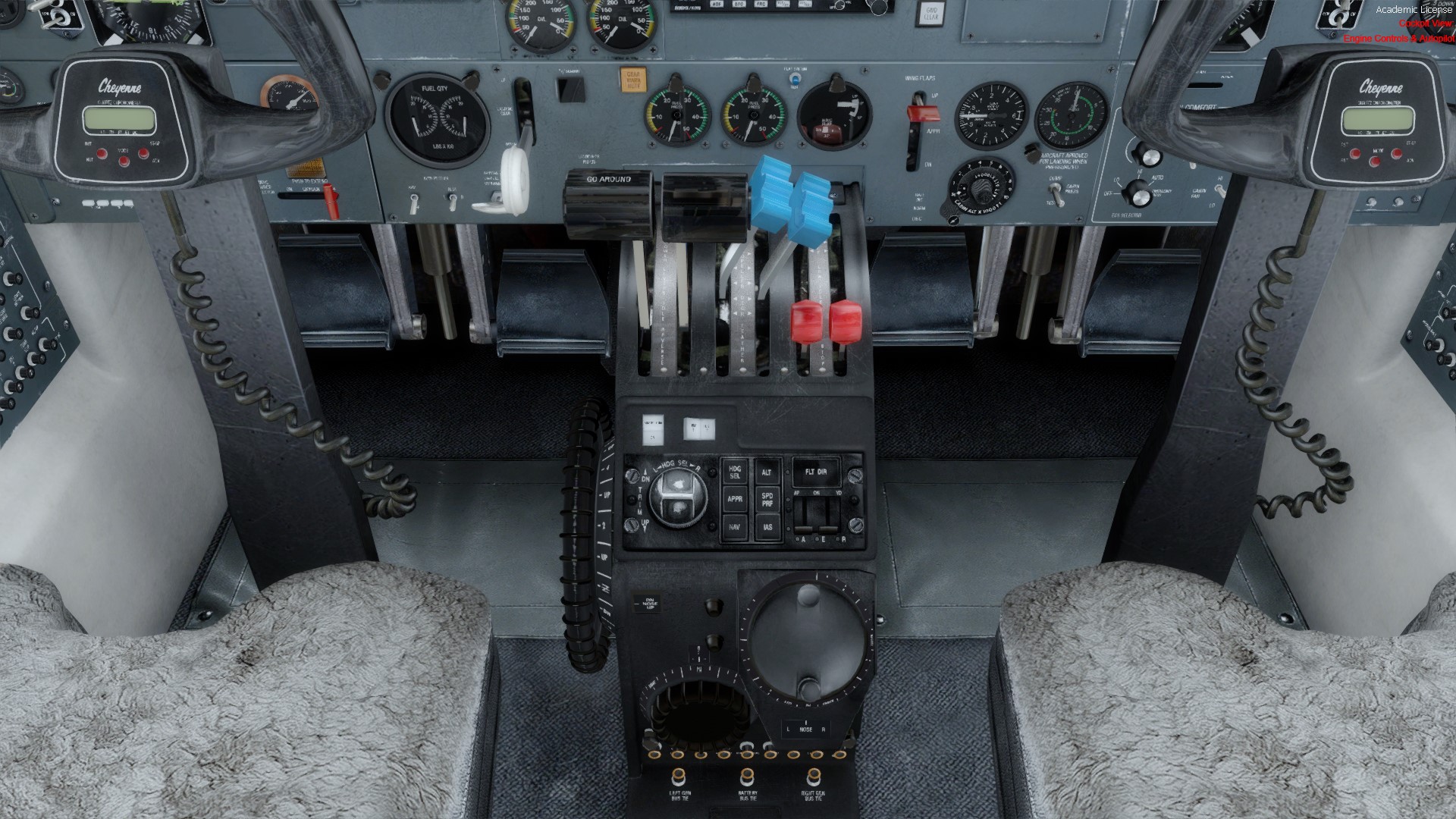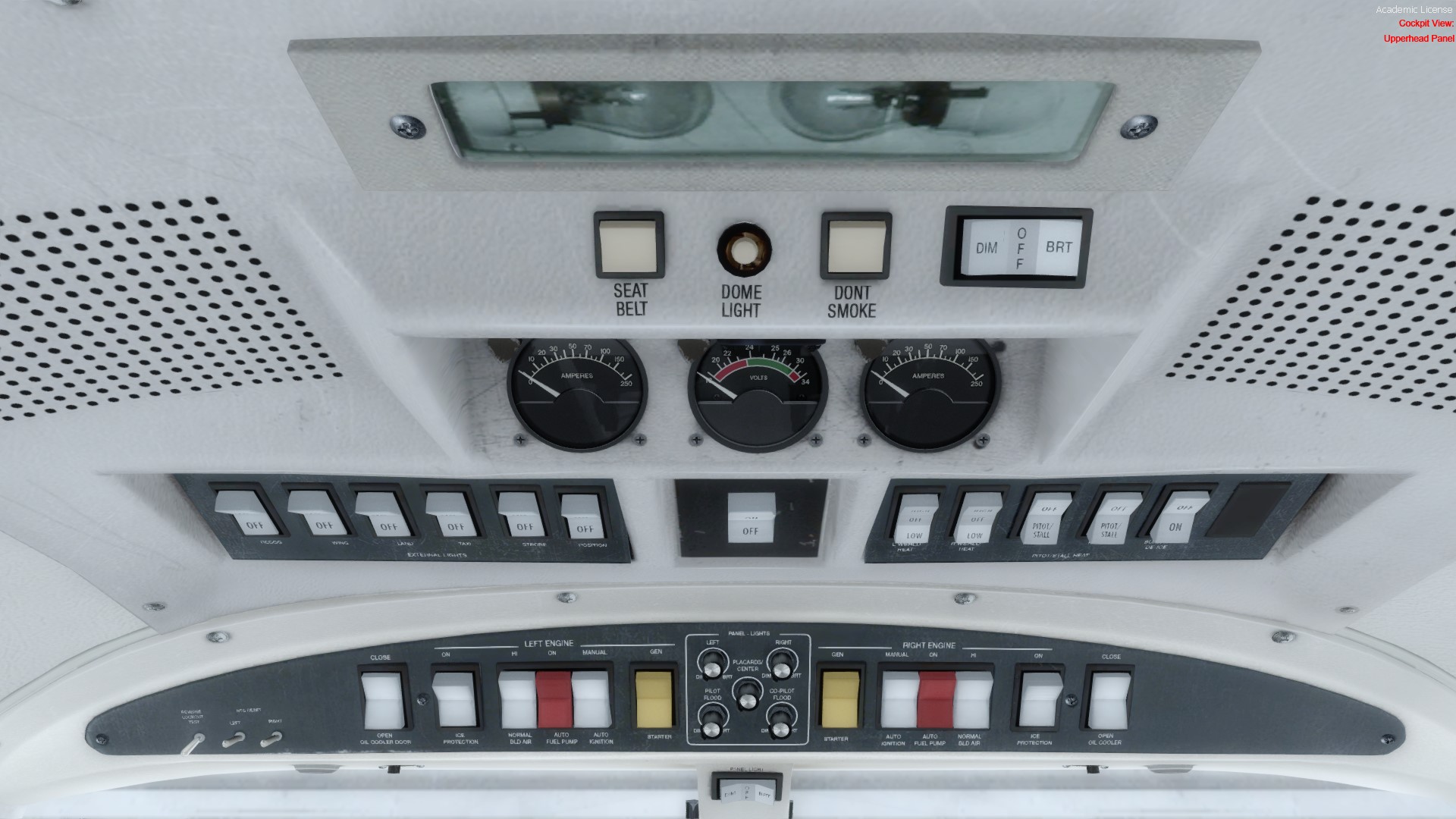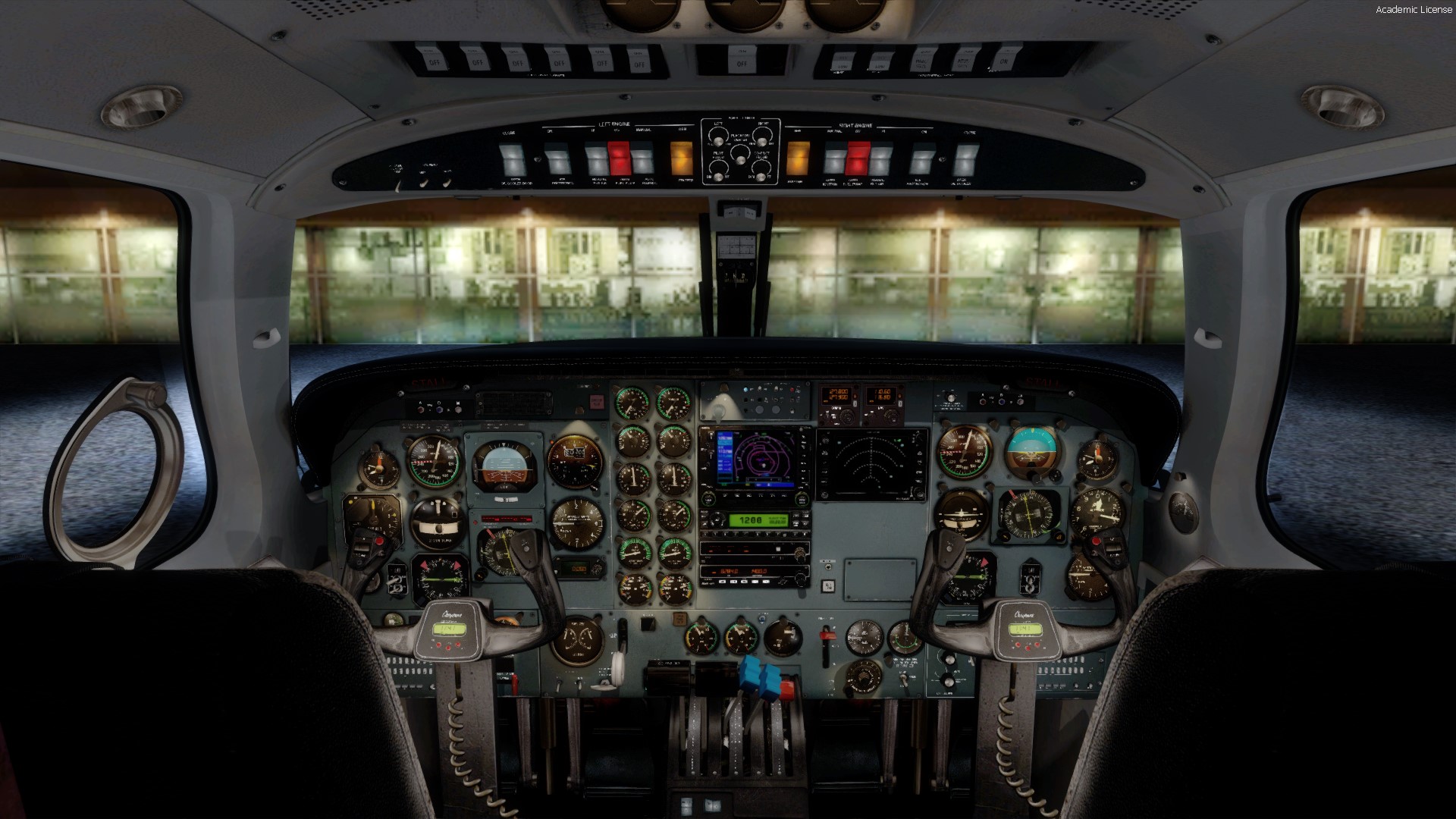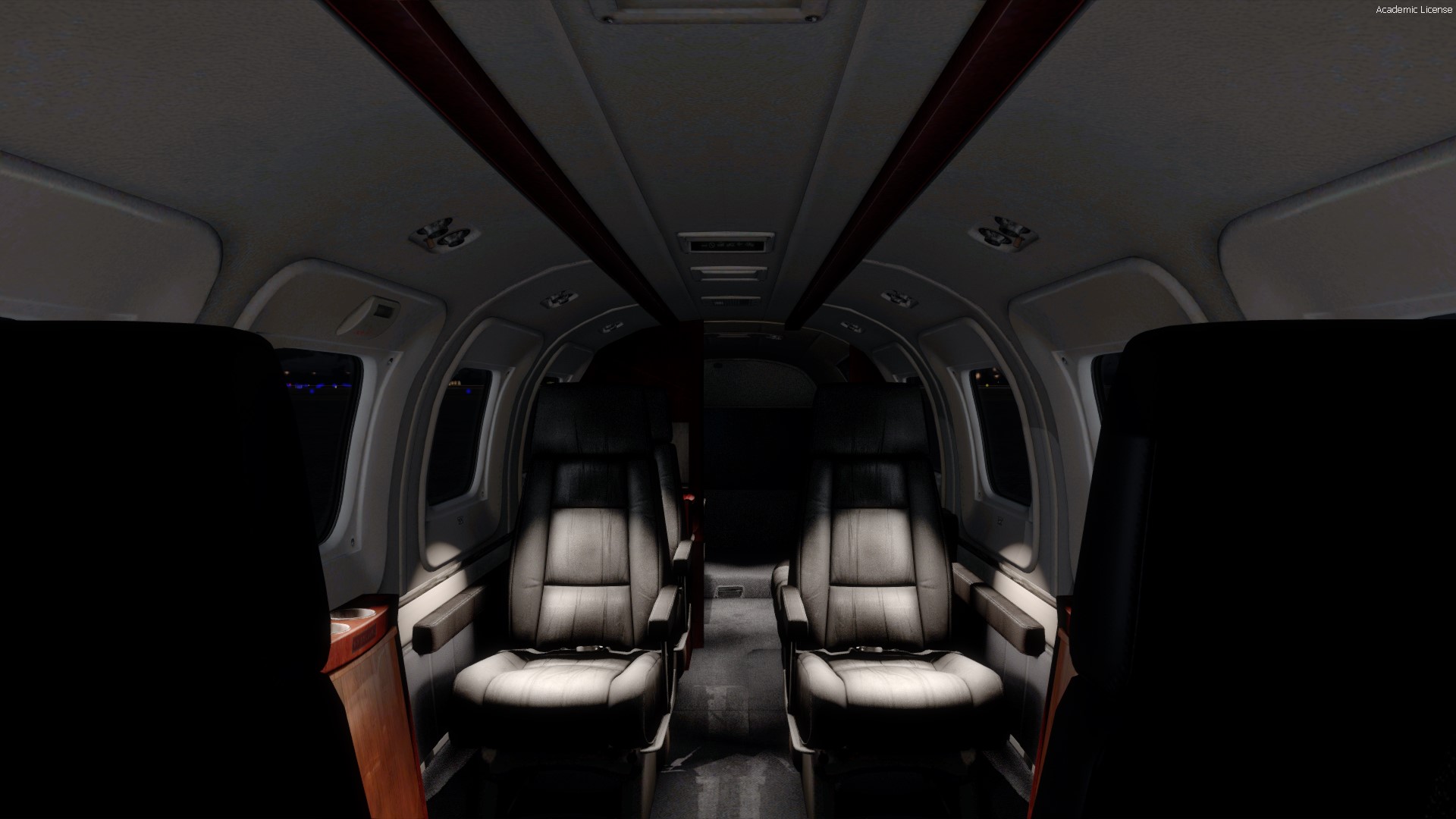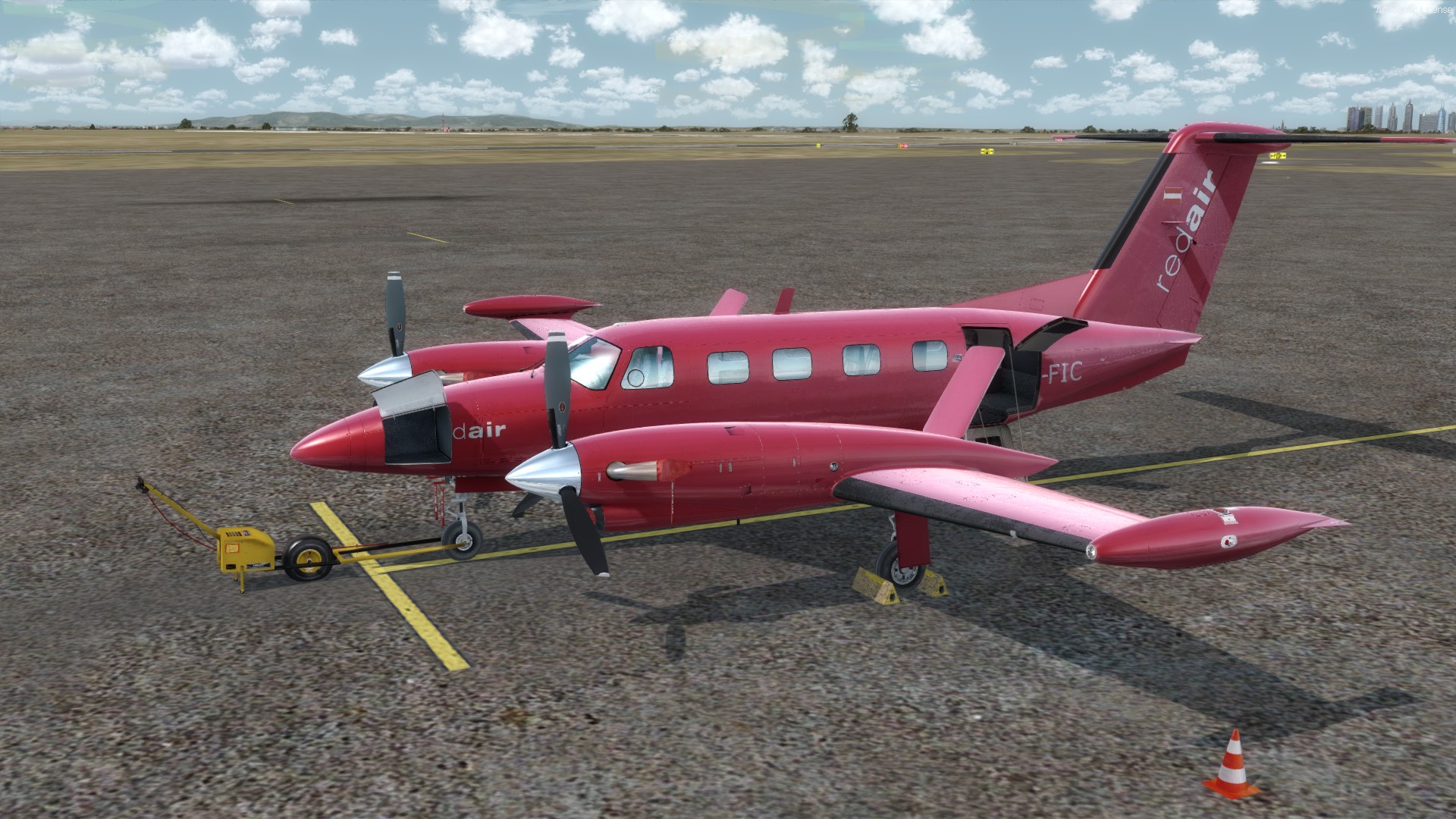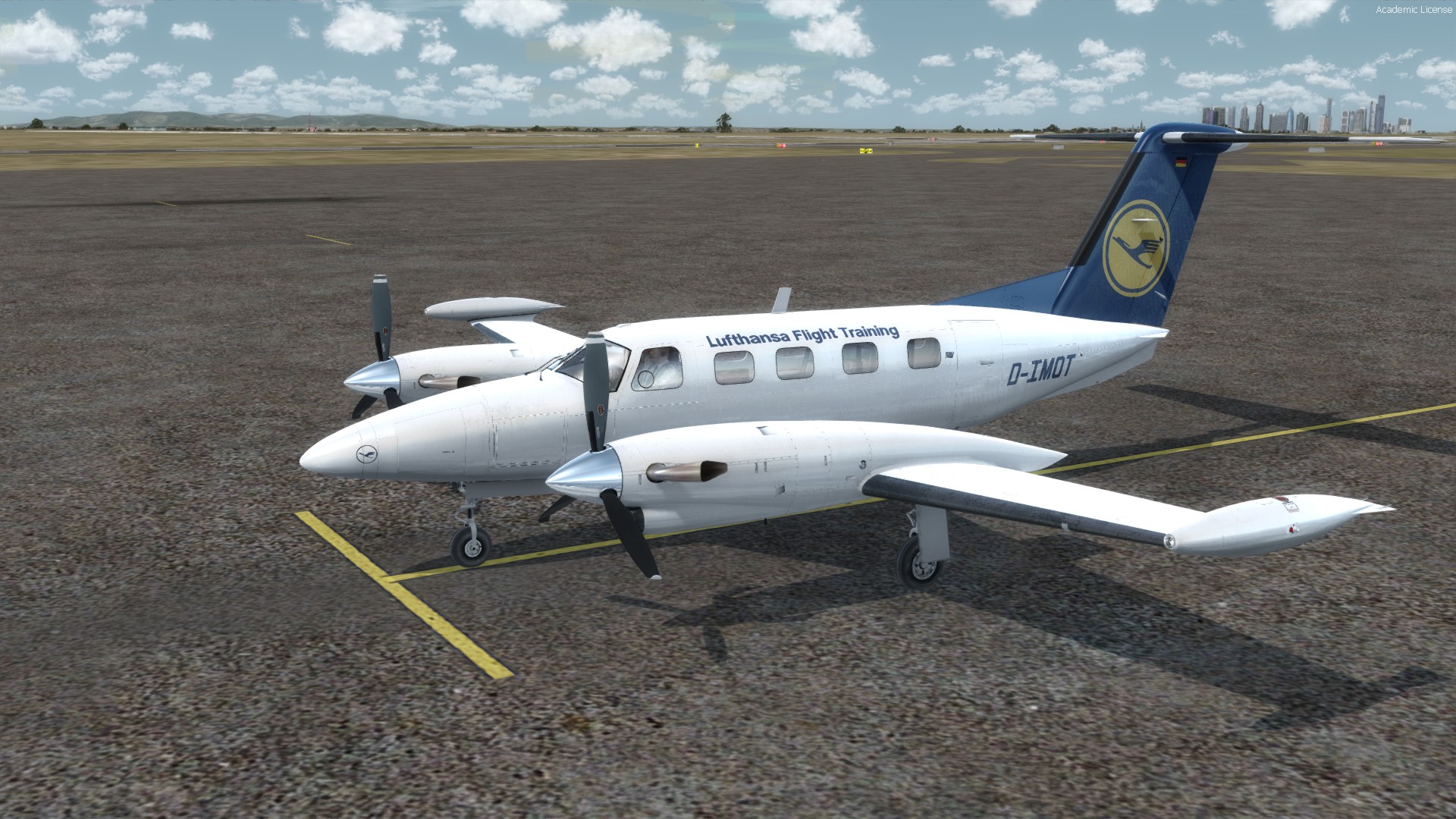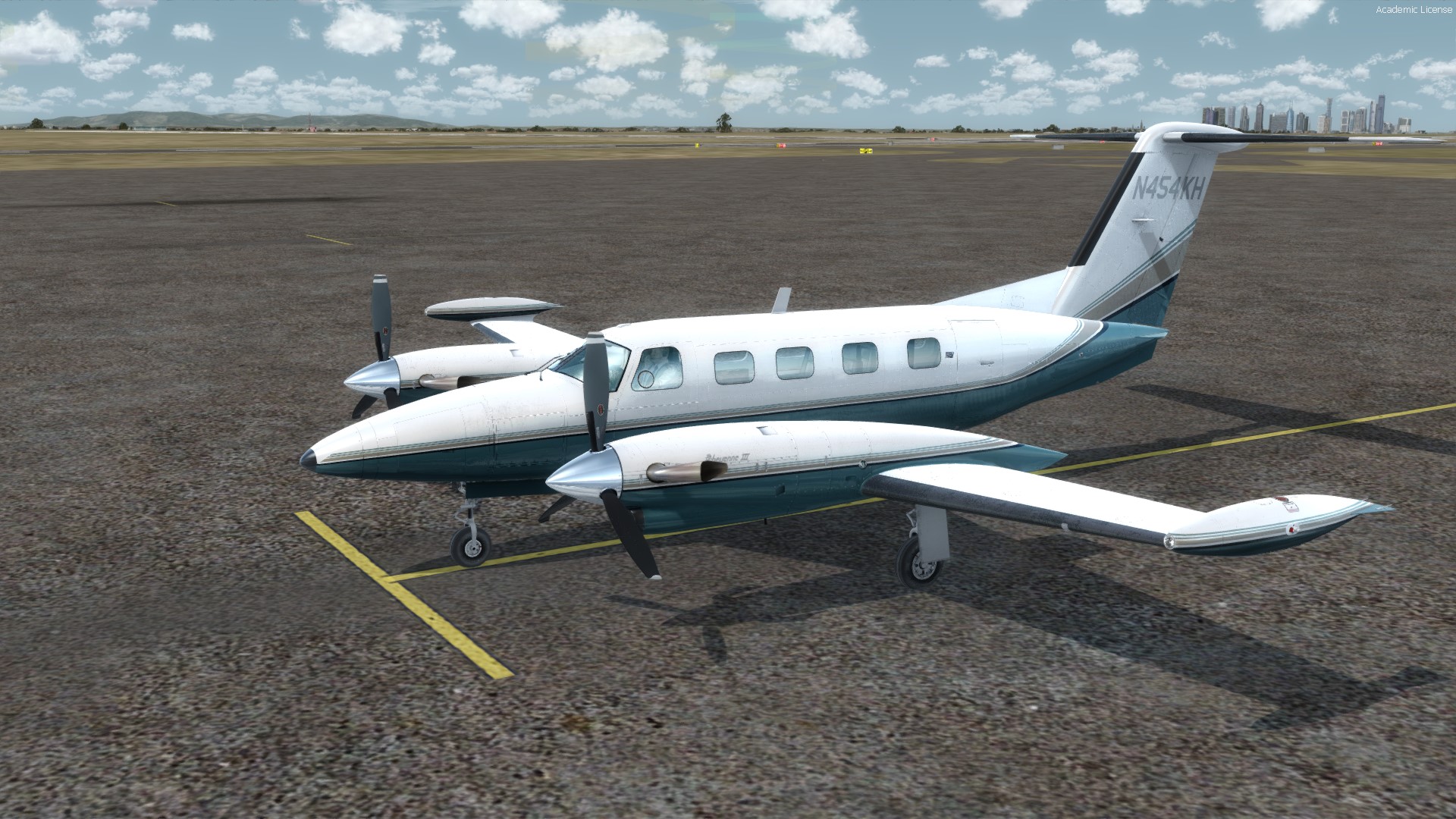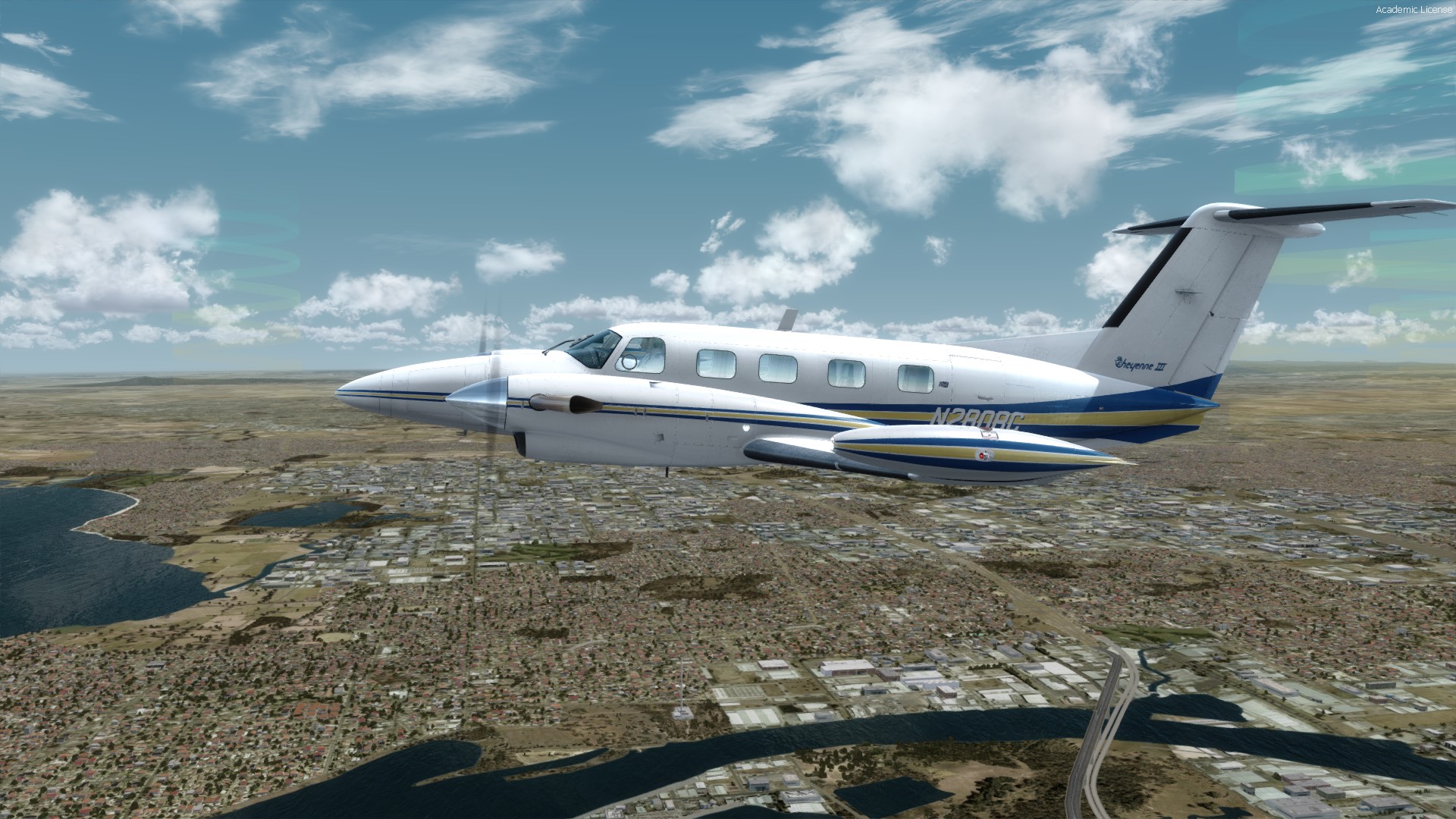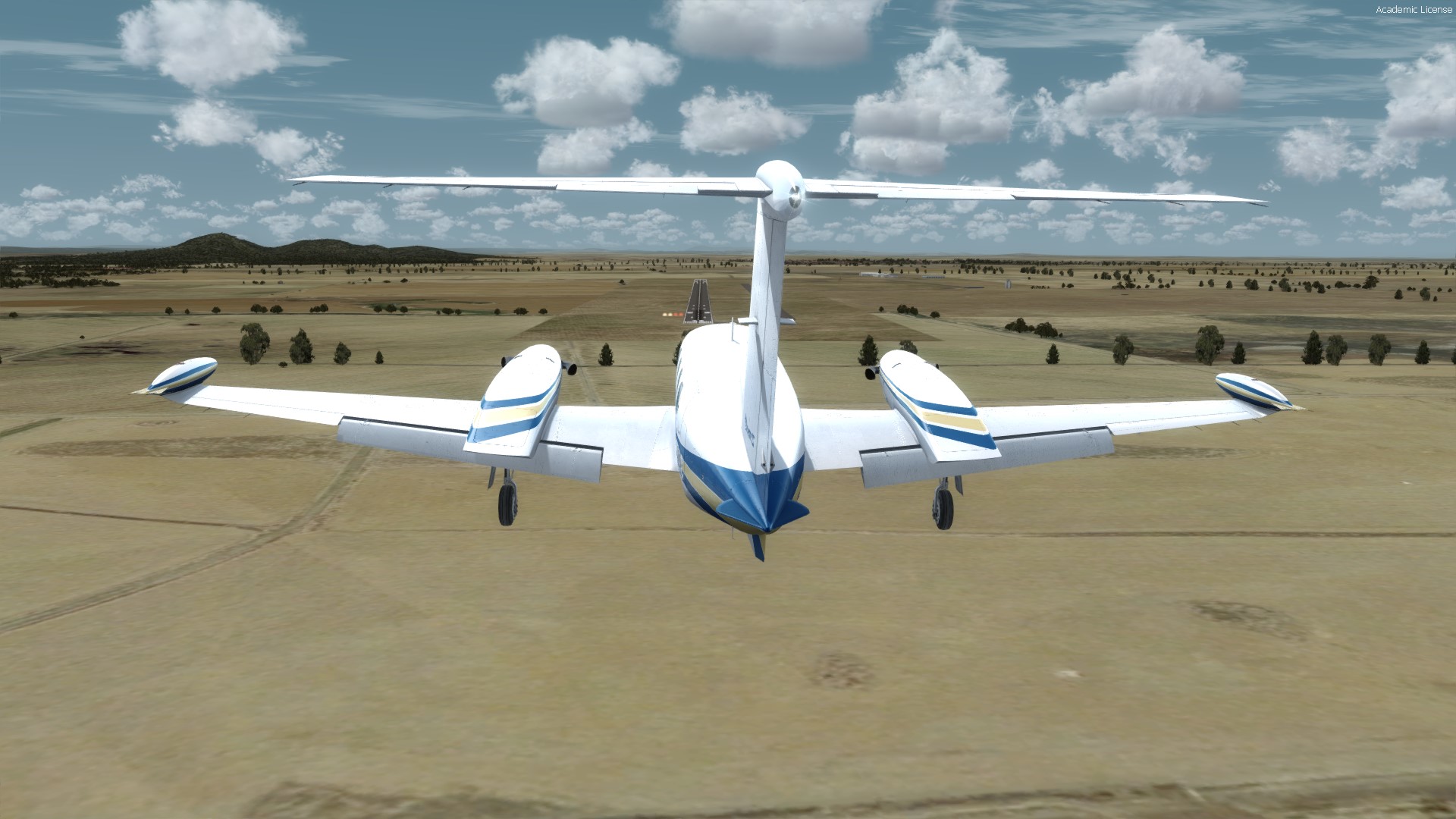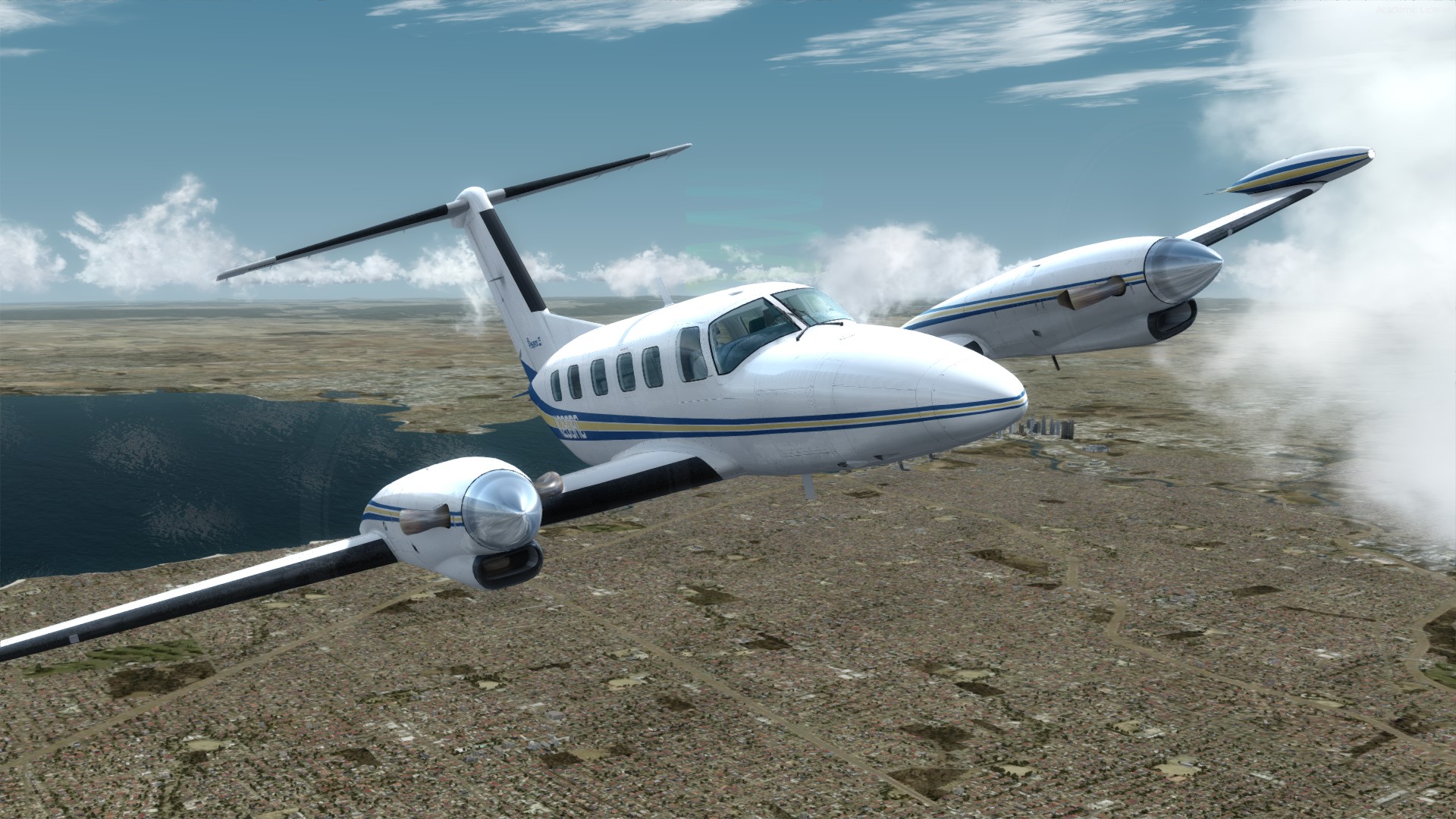Introduction
Having been around since 1927, Piper Aircraft needs no introduction in the world of general aviation and business / corporate aircraft manufacturing. Since then, the company has become a prolific manufacturer of an extensive range of aircraft models with piston and turboprop engines. Piper Aircraft often used an iterative / evolutionary type development approach to the design of aircraft in the model range in that some models were a subsequent development of aircraft of an earlier or smaller design. The Piper PA-42 Cheyenne III is a perfect example of this design approach.
Over the history of flight simulators and add-on aircraft product offerings we often see aircraft products at either end of the general aviation and business / corporate spectrum. Whilst some product development of aircraft in the middle of this range existed, it seemed more sporadic. In recent years though, there has been an increased focus in the development of products in this middle range. Carenado, like Piper Aircraft, need no introduction in the flight simulation community and more recently have been focusing on filling the middle void in the general aviation and business / corporate spectrum. The PA-42 Cheyenne III is such an aircraft, an aircraft with great capacity and performance, which will appeal to general aviation fans looking to step-up into a larger, turboprop aircraft.
History
The Piper PA-42-720 Cheyenne III is a low wing, twin engine, monoplane, with a retractable tricycle landing gear. Powered by a pair of Pratt and Whitney PT6A-41, 720 shp (537 kW), turboprop engines, it has seating for up to nine passengers in the main cabin. The PA-42 Cheyenne III is a larger development of the PA-31T Cheyenne, the turboprop variant of the the PA-31 Navajo.
The PA-42-720 Cheyenne III was announced in September 1977. The first production Cheyenne III flew for the first time on May 18, 1979 and FAA certification was granted in early 1980. Compared with the PA-31T Cheyenne, the PA-42-720 Cheyenne III is approximately three feet (one metre) longer, is powered by PT6A-41 720 shp (537 kW) turboprop engines, and incorporates several key optional upgrades on the PA-31T Cheyenne as standard. The significant and obvious external change to the model is the introduction of the T-tail. Deliveries of the production PA-42-720 Cheyenne III began on June 30, 1980. Subsequent variants incorporated upgraded engines, improved systems, and improved passenger comfort before production finally ceased in 1993.
Availability and Installation
The Carenado PA-42 Cheyenne III is currently available direct from Carenado and Carenado resellers as a download only product (some resellers also offer a master back-up CD / DVD service for a minor additional cost). It is normally priced at US$39.95, or the equivalent on currency cross rates. The download file size is 735MB and it requires 1.75GB of HDD / SSD space for installation. An activation key is issued on purchase and is used during installation and the installation process is intuitive and seamless.
Model Features
The major model features of the PA-42 Cheyenne III include:
HD quality textures (4096 x 4096);take-off run and landing real rolling movement effect;
real PA-42 Cheyenne III sounds;
custom brake sounds on taxi and landing run;
over torque failure simulated;
Flight1 GTN 750 integration;
Reality XP GNS530 integration (FSX only);
volumetric side view prop effect;
dynamic propeller shines effect;
realistic night lights effects on panel and cockpit;
real weight and balance; and
realistic and accurate flight dynamics.
Visual Appearance
General Overview. Due to Piper Aircraft's design approach, the PA-42 Cheyenne III bears a striking resemblance to other twin engine models in the Piper range. This resemblance will be immediately evident to those familiar with the range. Carenado have modelled an early production variant with the only difference being the engine variant, in this case the aircraft has Pratt and Whitney PT6A-41 engines. The PA-42 Cheyenne III is a large aircraft, the second largest aircraft built by Piper and second only to a subsequent PA-42 variant, the PA-42 Cheyenne IV, and its size is not lost in the modelling of the aircraft. As Carenado have demonstrated time and time again, the modelling is excellent and fully captures the design and purpose of the aircraft.
Exterior. The extended pointed nose of the PA-42 Cheyenne III is distinctive, as are the tipped wings, so common in other Piper aircraft designs. The Pratt and Whitney PT6A engines project well forward of their mounting point on the wing, accentuating their size and nearly dwarfing the aircraft, and they certainly give the impression that this is an aircraft which means business. Of special note with the engines is the Q tip propellers, the tips of the propellers are bent through 90°. Q tip propellers are designed to reduce propeller tip vortices and noise. The length of the cabin area gives a clear indication of how large and spacious the interior of this aircraft is, whilst the empennage is again distinctive with its T-tail configuration, another change from earlier models. The external model is of the usual high quality we have come to expect from Carenado, displaying magnificent detail and the features of the aircraft.
Interior. The interior of the PA-42 Cheyenne III oozes luxury and refinement. The main cabin is modelled with seating for eight in a club seating configuration of four seats, with an additional two seats in a row configuration on the right side behind the club seating, and another two additional seats in a side facing bench configuration on the left side behind the club seating and forward of the main cabin door. The main cabin also sports the ubiquitous refreshments bar. Entry to the cabin is via the door on the rear left side of the cabin and this is co-located with a split baggage door for access to the rear cabin baggage storage area. Additional separate baggage door access is provided in the nose and at the rear of each of the engine nacelles. Again, the quality of the cabin texturing and rendering is excellent, displaying the fine quality and detail synonymous with Carenado aircraft add-ons.
Flight Instruments, Avionics, and Aircraft Systems. The cockpit of the PA-42 Cheyenne III surprisingly commercial compared to the refinement of the main cabin. A totally analogue instrument fitout is supplemented with a Garmin GNS 530 GPS unit and a Bendix/King RDS 81/82 weather radar unit. Whilst the cockpit might seem a little dated, it is characteristic of the aircraft and the production era. The cockpit panel displays excellent quality and texturing, with evidence of wear marks around the instrument panel and individual instruments. Provision for Flight1 GTN 750 or Reality XP GNS530 integration is also provided.
Lighting, Animations, and Sounds. The night lighting effect in the cockpit is wonderful and provides a very good representation of the night lighting in the real world aircraft. The PA-42 Cheyenne III includes the typical range of animations and static elements you would expect for such an aircraft. The engine sounds are a very good representation of the Pratt and Whitney PT6A turboprop engines, producing a lovely sound throughout the power range. The engine sounds also provide very good stereo separation in both the internal and external views.
Models and Liveries. The PA-42 Cheyenne III is provided in a single model with five individual liveries (a selection showing below). Each aircraft has a unique aircraft registration number and there is also a blank livery provided for aircraft painting enthusiasts. Displaying high quality, the surface textures, reflections, and shadings, along with additional dirt, oil, and grease stains, give each aircraft a realistic appearance. Whilst the soiled appearance of the exterior is minimal, it is consistent with what you would expect from a well maintained corporate aircraft.
Summary, Issues, and Variations. The exterior rendition of the Carenado PA-42 Cheyenne III is highly detailed and accurate. The visual and texture quality and rendering is excellent and along with the modelling, it provides a faithful representation of the real world aircraft. Any noted visual variations were minor and are considered to be related to real world production variations or a degree of artistic licence on the part of the developer. Likewise, the texture and rendering quality of the cabin interior and cockpit reproduces a realistic look and feel. All elements of the cockpit are clear and easy to read, with various alternative cockpit camera views available to provide more detailed clarity. Any noted issues and variations with cockpit functions and operation were considered minor and / or in the interests of simplifying the function for practical flight simulator use.
General Characteristics and Performance Specifications
The general characteristics and performance specifications for the PA-42 Cheyenne III are provided in the table. This is based on data from the official PA-42 Cheyenne III Pilot Operating Handbook, data provided by Carenado, and general research sources. Some of this data varies between sources and also may be an approximation due to variances in data and the specific aircraft modelled by Carenado.
General Characteristics
| Crew | One / Two |
| Passenger Capacity | Up to nine |
| Length | 43 ft 4.75 in (13.23 m) |
| Wingspan | 47 ft 8 in (14.53 m) |
| Height | 14 ft 9 in (4.5 m) |
| Empty Weight | 6,837 lb (3,101 kg) |
| Fuel Capacity | 562 US gal (2,127 l) |
| Maximum Take-Off Weight (MTOW) | 11,200 lb (5,080 kg) |
| Power Plant | 2 x Pratt and Whitney PT6A-41, turboprop engines, 720 shp (537 kW) |
Performance Specifications
| Maximum Speed | 314 kts (362 mph, 582 km/h) |
| Cruise Speed | 282 kts (325 mph, 523 km/h) |
| Stall Speed | 89 kts (103 mph, 165 km/h) full flaps, gear down, engine at idle |
| Range | 2,270 nm (2,614 mi, 4,207 km) |
| Service Ceiling | 35,840 ft (10,925 m) |
| Rate of Climb | 2,380 ft/min (725 m/min) |
Flight Performance
A specific Test Flight was conducted to test the flight performance of the PA-42 Cheyenne III. The flight was conducted in clear weather with a full fuel load and the aircraft at maximum take-off weight (MTOW). A cruise altitude of 10,000 ft was adopted and the route distance was particularly chosen to provide a basis upon which to test the range characteristics of the aircraft.
The aircraft was very easy to taxi. With flaps set to 0° and trim set to the take-off position, aircraft rotation occurred at approximately 105 KIAS. There is no question about the power of the PT6A-41 engines and they certainly provide the PA-42 Cheyenne III with enough power, enough that you will need to pay close attention to your engine management very shortly after rotation in order to avoid an over torque failure on one or possibly both engines. Trying to control the PA-42 Cheyenne III with an asymmetric thrust situation is not easy. The power of the PT6A-41 engines ensure the aircraft leaps into the air with consummate ease and it will settle into a steady rate of climb of approximately 2,300 ft/min at 130 KIAS.
During cruise, a normal cruise power setting was established with an engine torque setting of 1995 lb/ft and a propeller RPM setting of 1895 RPM. With this cruise setting, the aircraft trims out and produces a ground speed of approximately 267 kts with a fuel flow of 836 lb/hr. These figures are reasonably consistent with the performance characteristics provided in the aircraft performance tables. The Test Flight confirms the modelling of the aircraft for speed performance to be reasonably accurate against the performance tables for the aircraft.
Configured for landing, with full flaps, and trimmed for a descent rate of approximately 500 ft/min, the aircraft's approach speed was approximately 110 KIAS and it touched down at approximately 100 KIAS, with a landing roll-out comparable with the specifications for the aircraft. For an aircraft of this size, the approach is gentle, and the aircraft responds well to control inputs.
In testing the accuracy of the instruments, based on the measured Test Flight, the speed indications on the airspeed indicator, were consistent with the averages measured. Additionally, when establishing a set rate of climb on the vertical speed indicator, the respective gain in altitude on the altimeter was achieved within the measured minute, and a standard rate turn was achieved within the measured two minute period using the turn coordinator.
The performance of Carenado's PA-42 Cheyenne III met all the expectations for this aircraft. The aircraft is large and the engines powerful, however, its handling characteristics are excellent and it responds well to control inputs during all stages of flight. Overall, the aircraft model displays an superb rendition of the flight characteristics and performance against the aircraft performance data.
Documentation
There are seven primary manuals / documents provided in Adobe Acrobat format (.pdf) for the PA-42 Cheyenne III:
Carenado Garmin GNS 530 – this two page document details the operating of the Garmin GNS 530 GPS unit; Carenado PA-42 Cheyenne III Performance Tables – this nine page document details the performance tables for the aircraft;
Carenado PA-42 Cheyenne III Normal Checklist – this 21 page document details the procedures for the normal operation of the aircraft;
Carenado PA-42 Cheyenne III Emergency Procedures – this 31 page document details the emergency procedures for the aircraft;
Carenado PA-42 Cheyenne III References – this two page document details the reference speeds for the aircraft;
Carenado Weather Radar Manual – this three page document details the operating of the Bendix/King RDS 81/82 weather radar; and
Recommended Settings – this two page document details recommended display and realism settings for the aircraft.
An additional two text documents are provided and these cover the integration of the Flight1 and Reality XP GPS integration respectively.
Slipping Off the Back of the Reality Curve
Before I assess the Value for Money, it is worth just taking a minute and getting a grip on reality. The flight sim community is made up of a rich abundance of individuals and characters from young people wanting to experience the thrill of flight for the first time through to professional real world pilots, and we are all drawn to this obsession for a broad range of reasons. However, the reality is, the average flight simmer is sitting at a personal computer running a flight simulator worth anywhere between US$59.95 to US$199.00.
Now, I have heard it all, from the guy with "...5,000 hours on VATSIM..." (whatever that is meant to mean) to the guy who wants to tell you that you are "...obviously not a real world pilot because you failed to identify the limited functionality of the ProLine21 avionics suite...", or the real world pilot who will decry a product because it does not perfectly replicate the real world aircraft which he has the second most number of hours on in his country. REALITY CHECK people! You are not flying a real world, full motion flight simulator – even if you could afford one! This is a US$39.95 aircraft add-on for what is ostensibly an entertainment flight simulator.
Value for Money
At US39.95, it could be said that the Carenado PA-42 Cheyenne III is probably starting to approach the upper end of the cost equation, but it is consistent with Carenado's pricing model. For your money, you are getting a feature rich, high quality aircraft add-on. Sure, there might be some missing functionality on the GPS unit or some cockpit detail which is not absolutely essential for flight simming purposes, but so what, and would the average flight simmer even care. When all is weighed up, the Carenado PA-42 Cheyenne III is considered excellent Value for Money.
Simulator Performance
The aircraft model performed excellently within the existing settings I have in P3D. I have most of my settings set very high and there was no need to make any adjustments. There was no discernible frame rate impact directly attributable to the Carenado PA-42 Cheyenne III and P3D continued to perform smoothly.
Technical Requirements
This version of the Carenado PA-42 Cheyenne III is for FSX/FSX SE/P3D only. Other specified technical requirements are as follows:
Windows 10/8/7/Vista/XP;
FSX with SP2 installed (or Acceleration Pack), FSX Steam Edition, or Prepar3D (v3/v4); and
Intel i3, 3GHz CPU or similar, minimum 2GB RAM (4GB RAM recommended), 512GB graphics card, and 1.75GB available HDD / SSD space.
Review Computer Specifications
The specifications of the computer on which the review was conducted are as follows:
Intel i7 990X Extreme 3.46GHz;
NVidia GTX980 G1 Gaming, 4GB, 1228/1329MHz;
12GB, Kingston DDR3, 2000MHz, XMP T1 CL9 HyperX;
Windows 7, (64bit); and
Lockheed Martin P3D Version 4.
Additional Major Add-ons.Active Sky for P3Dv4, Active Sky Cloud Art, SPAD.neXt, FS Global Ultimate region series, Orbx FTX Global BASE, Orbx FTX Global VECTOR, Orbx FTX Global openLC series, Orbx FTX region series, Orbx FTX airport series, and Orbx FTX Trees HD.
Conclusion
Carenado have established a solid, high quality approach to their product range and they consistently deliver to this level of quality. Sure, no product is perfect, but at least with the Carenado PA-42 Cheyenne III you get exactly what you pay for and the modelling, textures, and rendering are brilliant. Carenado have been a leader in setting a standard in modelling, a standard only a few can emulate, and they have done another magnificent job with the PA-42 Cheyenne III. The flying characteristics of the aircraft are superb, it has power, yet is gentle to the touch, with excellent response to control inputs even at low speeds. Coupled with a flight performance which nicely replicates the documented aircraft performance data, the PA-42 Cheyenne III is one beautiful aircraft to fly.
Verdict and Scores
Verdict
| A brilliantly modelled aircraft with fantastic flight characteristics and handling, the Carenado PA-42 Cheyenne III is an outstanding add-on. |
Scores
For |
Against |
Category |
Score/10 |
|---|---|---|---|
| Brilliant external modelling. | No major issues. | External Model | 9.5 |
| High quality internal modelling. | Internal Model | 9.5 | |
| Outstanding flight characteristics and handling. | Sounds | 10 | |
| Thorough documentation. | Flight Characteristics (does it fly by the numbers) | 10 | |
| Flight Dynamics (does it feel like what it looks like) | 10 | ||
| Documentation | 10 | ||
| Value for Money | 9.0 |
Overall Score

The Carenado PA-42 Cheyenne III is awarded an overall Mutley's Hangar score of 9.7/10,with an "Outstanding" and a Mutley's Hangar Gold Award. |


